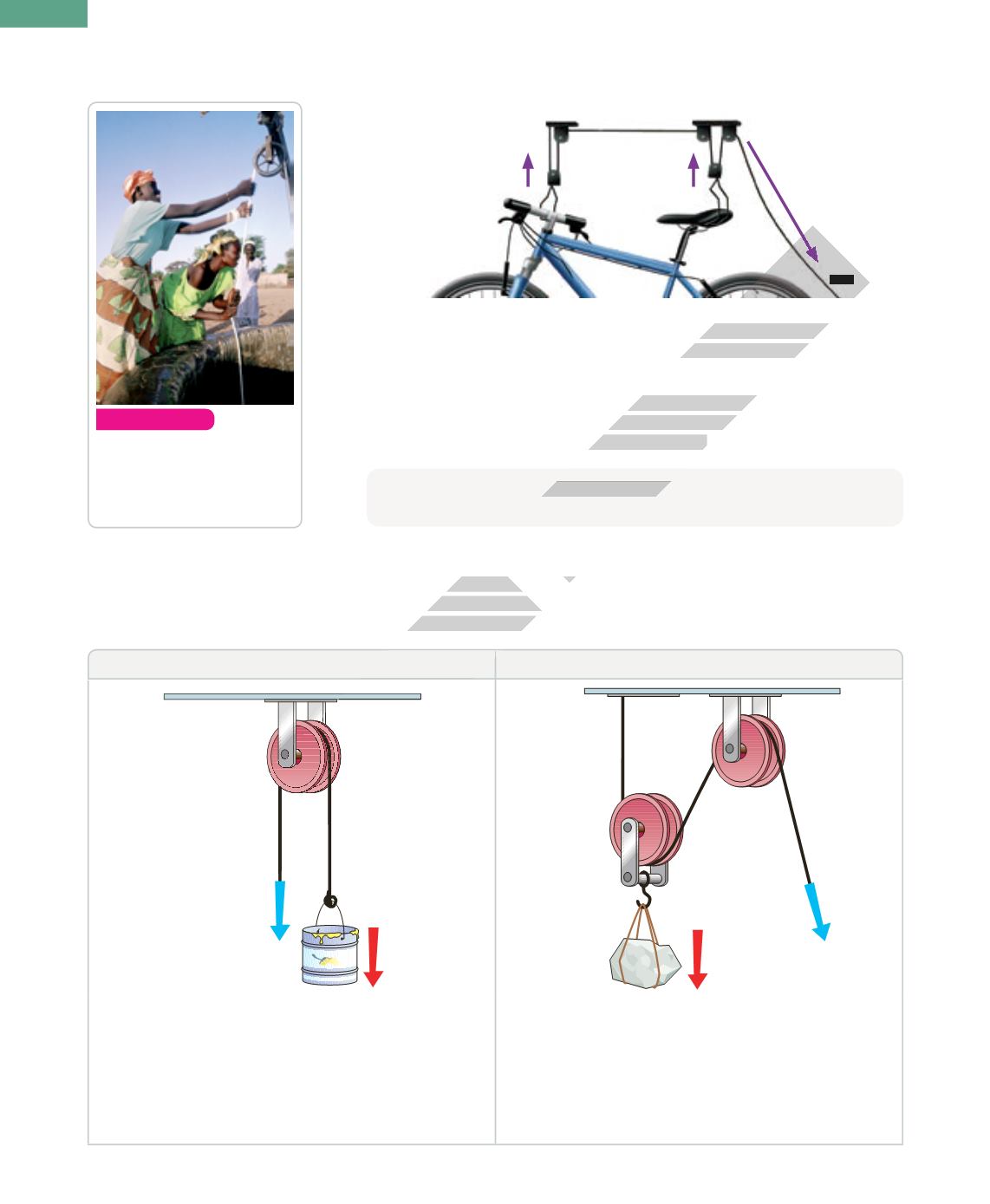
106
2.2.
Pulleys and compound pulley systems
Look at the rope in the picture above. It goes up and down four times through the
pulleys. That means the bicycle will rise a distance that is four times less than the
length of rope that we pull down.
If we pull down one metre of rope, the bicycle goes up 25 centimetres. This is
helpful because we only need one quarter (1/4) of the force. If we don’t use pulleys,
we need four times as much force to lift the bicycle.
Pulleys
A pulley is a wheel that rotates around an axis and has a groove. If we pull ropes,
belts or chains through pulleys, we can lift objects with less effort. We can divide
pulleys into two basic types:
Fixed pulley
Movable pulley
The forces are equal because the rope moves the same
distance on both sides. We can use gravity and our own
weight to help us. It’s easier to lift a weight by pulling down
than by pulling up.
F = R
Force = Resistance
The rope follows a double path around the pulleys. We need
half the force to lift the same weight as with a fixed pulley.
We must pull twice as much rope to lift an object to the same
height.
F = R / 2
Force = Resistance / 2
In a system of pulleys, the equilibrium between the forces depends on the path
that the rope follows.
R
F
R
F
Understand
9.
What mechanism are
the women using? How
does it help them get
water from the well?
rope
ADVANCE EDITION


